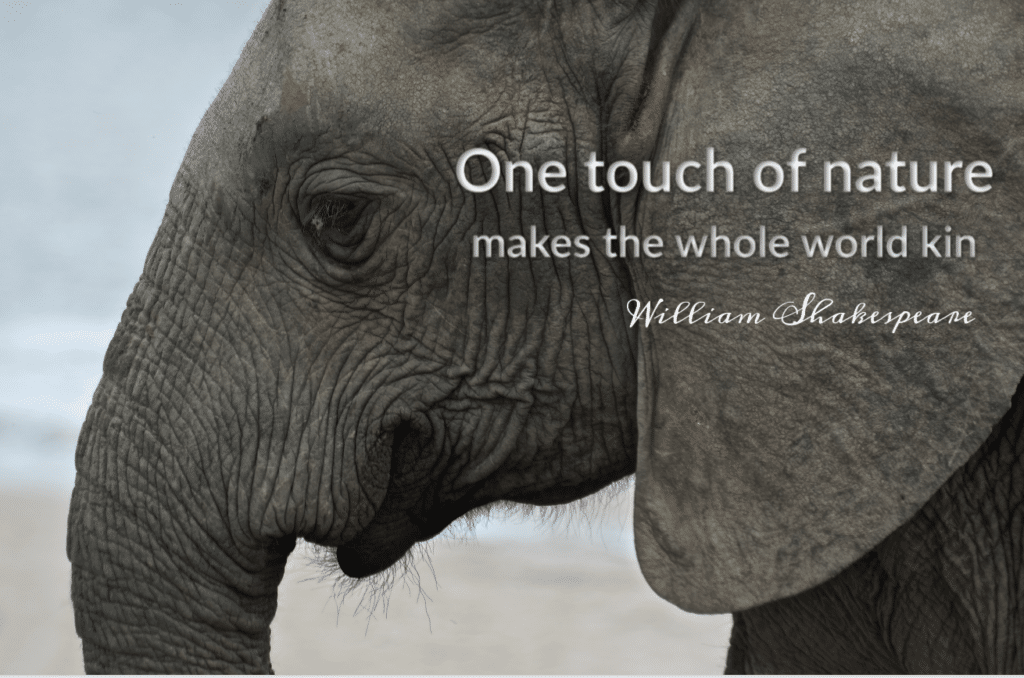[et_pb_section bb_built=”1″ _builder_version=”3.0.47″][et_pb_row _builder_version=”3.0.48″ background_size=”initial” background_position=”top_left” background_repeat=”repeat”][et_pb_column type=”4_4″][et_pb_text _builder_version=”3.21.4″ background_size=”initial” background_position=”top_left” background_repeat=”repeat” z_index_tablet=”500″]

I’m feeling pretty despairing about climate change these days. The idea that people in high places dispute the science behind what’s happening to our environment seems unconscionable. Barbaric. But then a lot of things seem that way to me these days.
I recently interviewed storyteller and mythologist Michael Meade for my podcast. He talked about how truth and beauty are important as we work for change. I asked him, “Where’s the beauty in the environmental movement?” It’s been feeling so heavy.
Five days later, I found my answer in the backyard: my trees.
When I feel bleak and despairing about change, it’s often because I’ve become overwhelmed. I’ve lost my relationship to the particular. I’ve generalized and started painting with only one color – gray. I’ve objectified my relationship to the world. In Martin Buber’s famous words: I’ve shifted from I-thou to I-it.
In the face of such grim news about the environment, I’d forgotten the love.
Buber wrote a lot about trees. Here’s a snippet.
“I consider a tree. I can look on it as a picture: stiff column in a shock of light, or splash of green shot with the delicate blue and silver of the background. I can perceive it as movement: flowing veins on clinging, pressing pith, suck of the roots, breathing of the leaves, ceaseless commerce with earth and air—and the obscure growth itself…
When my husband and I moved to the island where we live, I found myself with an acre plus of lawn staring at me. Even though we had beautiful madrona, cedar, and doug fir in the background, the lawn looked so boring. Fortunately for me, many people in Seattle on small city lots were putting their trees “up for adoption,” when the trees needed to be taken out in favor of a vegetable garden. I adopted many and promised each a good home.
I adopted a weeping cherry, a colorful katsura, mature vine maples, Japanese maples, two redwoods in five-gallon pots, and more. Each came with a story and the affection and past intention of the owner. The redwoods we adopted had been bought to honor a deceased dachshund. They now stand 30 feet tall. Each time I pass them, I think about the dachshund.
Then there’s Harriet, the only tree that came with a name.
 Harriet is a copper beech, grown from seed by a Master Gardener living on a small city lot near Seattle. How, on the hottest day of the year, we rescued Harriet after she broke through her oak barrel, is another story, as is how I planted her in the wrong place twice. My friend Beth carefully broke the news to me: copper beeches get BIG. Harriet had to be transplanted a third time. I apologized profusely as she was carefully moved to her new (I promised, it would be permanent) home where she’d have plenty of room to spread.
Harriet is a copper beech, grown from seed by a Master Gardener living on a small city lot near Seattle. How, on the hottest day of the year, we rescued Harriet after she broke through her oak barrel, is another story, as is how I planted her in the wrong place twice. My friend Beth carefully broke the news to me: copper beeches get BIG. Harriet had to be transplanted a third time. I apologized profusely as she was carefully moved to her new (I promised, it would be permanent) home where she’d have plenty of room to spread.
Harriet was never an “it” or “just a tree.” She was a friend. Yep, I loved her. Her survival meant a lot to me.
Today, she flourishes at twenty-feet tall and she’s one of the reasons I’d hate to leave our land.
My trees come with stories. I steward their growth. When a storm breaks a major limb on maple, or a dang raccoon climbs up and breaks the leader (main branch) of a plum tree, I take it personally.
My trees give nature a face.

As I feel despair about our environment, they comfort me, inviting me to not give up.
You don’t have to live in a rural area to have a relationship with trees. Living in Manhatten, I was nurtured by the trees of Central Park.
Maybe your most intimate connection with nature is not with trees. Maybe it’s with chipmunks, or sea otters, abalone, or sea urchins, coral or moss or sword ferns–the part of nature that you hold personally dear.
When I listen to my trees, I don’t turn my back on science. Listening to the “spirit of our trees” has awakened a curiosity about science that I never had when I thought science was just statistics, facts, and formulas to memorize, woven together into mechanistic concepts.
Today, scientists and “tree huggers” work together. Team earth needs us all.
The environment isn’t just a problem–it’s a living world.
It needs a face.
Scientist and Native American storyteller Robin Wall Kimmerer names the objects that surround her.
In indigenous ways of knowing, all beings are recognized as non-human persons, and all have their own names. It is a sign of respect to call a being by its name, and a sign of disrespect to ignore it. Words and names are the ways we humans build relationships, not only with each other, but also with plants….
Intimate connection allows recognition in an all-too-often anonymous world… Intimacy gives us a different way of seeing.
The trees welcome that intimacy. Their faces remind me to not give up or lose hope about addressing climate change.
Harriet expects nothing less from me.
[/et_pb_text][/et_pb_column][/et_pb_row][/et_pb_section]









